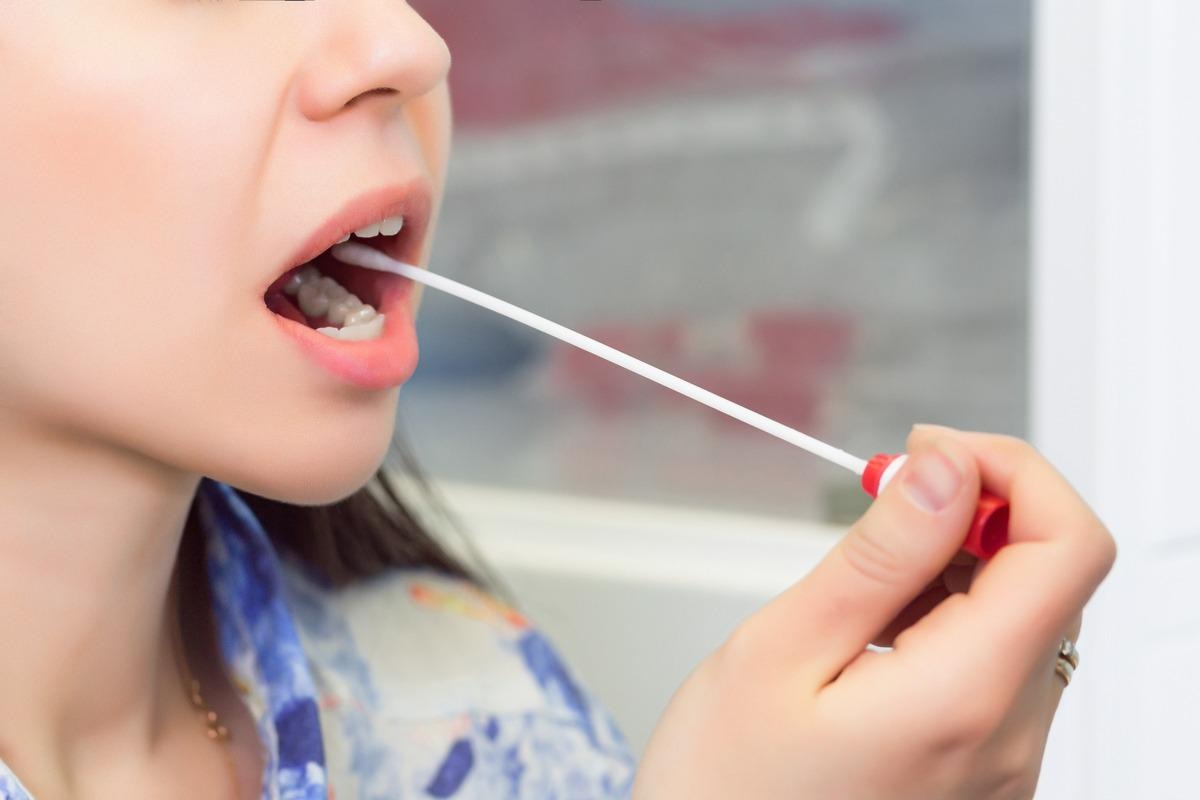A team of scientists from South Africa has recently demonstrated that saliva swabs are more effective than mid-turbinate swabs for the polymerase chain reaction (PCR)-based detection of omicron variant of severe acute respiratory syndrome coronavirus 2 (SARS-CoV-2).
The study is currently available on the medRxiv* preprint server.
 Study: Saliva swabs are the preferred sample for Omicron detection. Image Credit: UvGroup/Shutterstock
Study: Saliva swabs are the preferred sample for Omicron detection. Image Credit: UvGroup/Shutterstock
Background

 *Important notice: medRxiv publishes preliminary scientific reports that are not peer-reviewed and, therefore, should not be regarded as conclusive, guide clinical practice/health-related behavior, or treated as established information.
*Important notice: medRxiv publishes preliminary scientific reports that are not peer-reviewed and, therefore, should not be regarded as conclusive, guide clinical practice/health-related behavior, or treated as established information.
Recently emerged omicron variant of SARS-CoV-2 has caused a sharp increase in new coronavirus disease 2019 (COVID-19) cases worldwide. The variant has been found to increase the risk of reinfection as well as vaccine breakthrough infections. With around 40 mutations in the spike protein, the variant exhibits significantly increased transmissibility compared to other identified variants of concern (VOCs), including the alpha, beta, gamma, and delta variants.
Currently, the omicron variant is distinguished from other SARS-CoV-2 variants using the S-gene target failure approach. Because of the presence of a deletion mutation in the spike gene of omicron variant, PCR fails to detect this particular gene. This phenomenon is called S-gene target failure and is used as a marker to detect omicron infections. However, the pattern of viral shedding during omicron infection and its impact on diagnostic sampling methods is still largely unknown.
In the current study, the scientists have compared the performance of saliva swabs and mid-turbinate swabs for PCR-based detection of delta and omicron variants.
Study design
The scientists collected saliva swabs and mid-turbinate swabs from 382 symptomatic, non-hospitalized patients who appeared for SARS-CoV-2 testing in a Cape Town hospital between August and December 2021. They subsequently tested the samples using reverse transcription PCR (RT-PCR).
The categorization of delta and omicron was done based on the whole genome sequencing data, PCR-derived S-gene target failure data, and sampling date. To compare between saliva and mid-turbinate samples, a composite standard for SARS-CoV-2 infection was used. The detection of viral RNA in either of the matched samples was considered a positive infection.
The results obtained from test samples and composite standards were compared to estimate the sensitivity and specificity of saliva and mid-turbinate swabs for the detection of omicron and delta infections (positive percent agreement).
Important observations
The positive percent agreement of saliva and mid-turbinate swabs to the composite standard was estimated to be 71% and 100% for the delta infection, respectively. In contrast, the saliva and mid-turbinate swabs respectively exhibited 100% and 86% positive percent agreement for the detection of omicron infection.
Considering nucleocapsid gene as a target reference, the mean differences in RT-PCR cycle threshold (Ct value) between saliva and mid-turbinate swabs were estimated to be 5.2 and 1.5 for the delta and omicron infections, respectively.
The average duration between symptom onset and the positive test result was 3 days and 2 days for the delta and omicron infections, respectively.
Study significance
The study findings reveal that saliva samples are more useful than mid-turbinate samples for the accurate detection of omicron infection. As observed in the study, the saliva samples contain more viral RNA than nasal samples. This could be because of altered viral shedding patterns during omicron infection.
There is evidence suggesting that the replication rate of omicron variant is significantly higher in the upper respiratory tract than that of the delta variant. However, in the lower respiratory tract, omicron replicates significantly slower than the wildtype SARS-CoV-2 (Wuhan strain). These observations indicate that certain host tissues preferentially support the growth of the omicron variant (tissue tropism). The altered tissue tropism during omicron infection might be the reason for the altered viral shedding pattern.
Considering the study findings, the scientists suggest that currently used diagnostic sampling methods should be reassessed for omicron infections as analyzing nasal or nasopharyngeal samples may lead to a suboptimal diagnosis.

 *Important notice: medRxiv publishes preliminary scientific reports that are not peer-reviewed and, therefore, should not be regarded as conclusive, guide clinical practice/health-related behavior, or treated as established information.
*Important notice: medRxiv publishes preliminary scientific reports that are not peer-reviewed and, therefore, should not be regarded as conclusive, guide clinical practice/health-related behavior, or treated as established information.